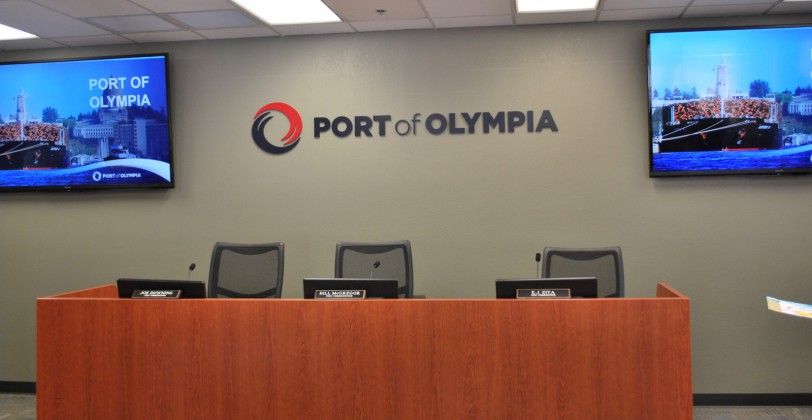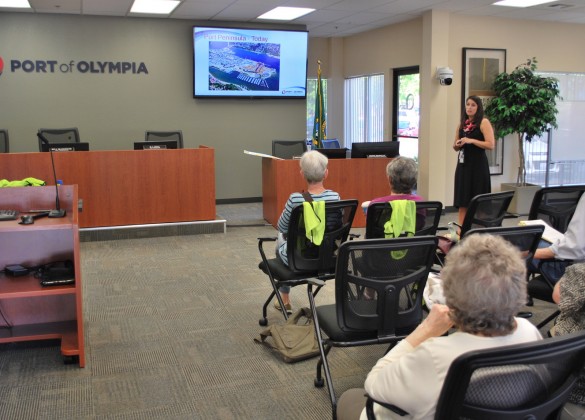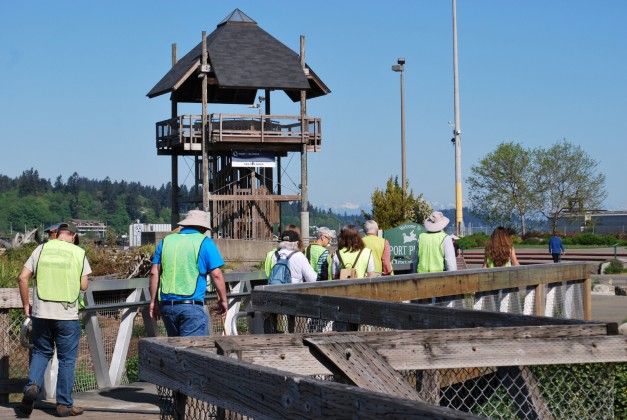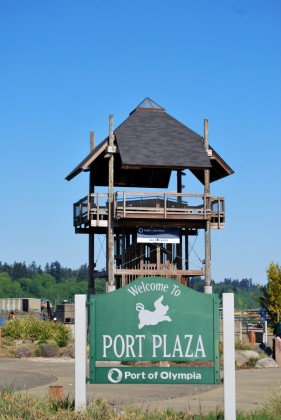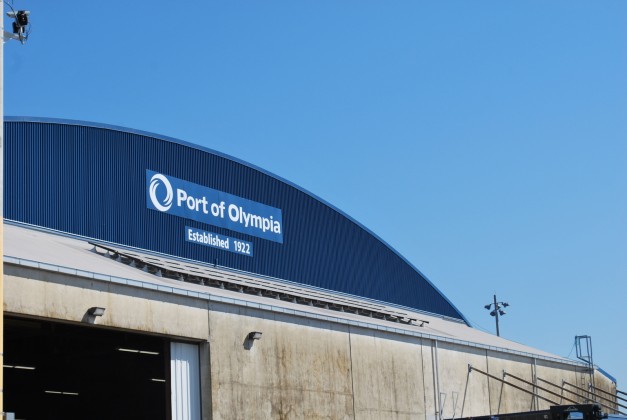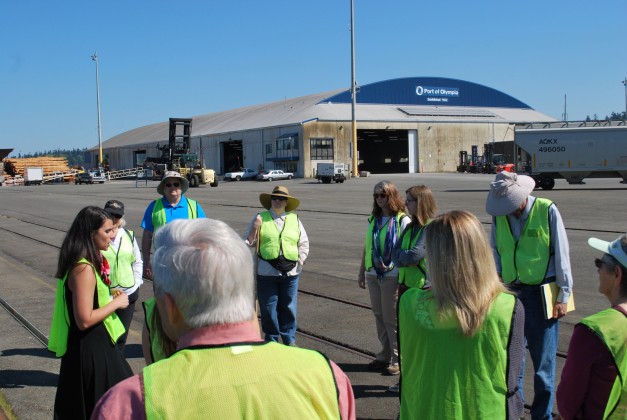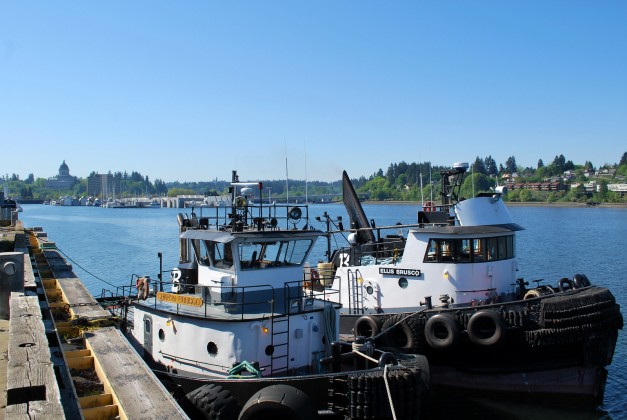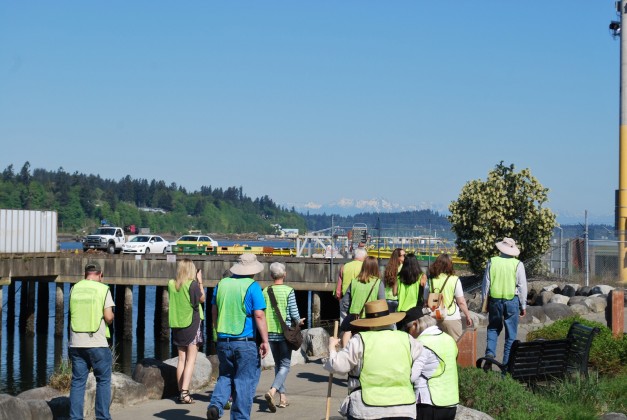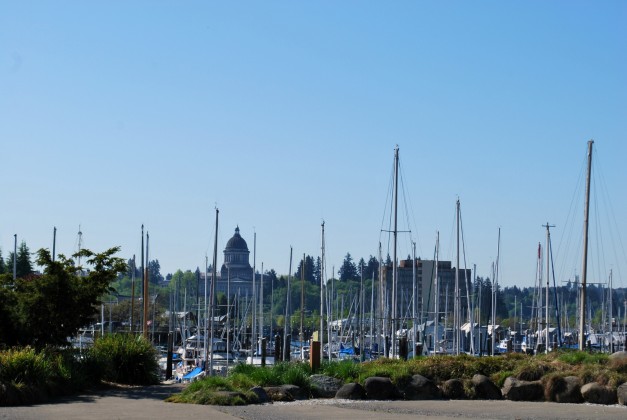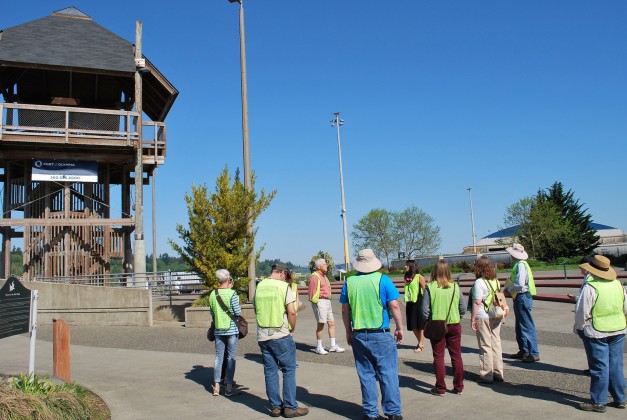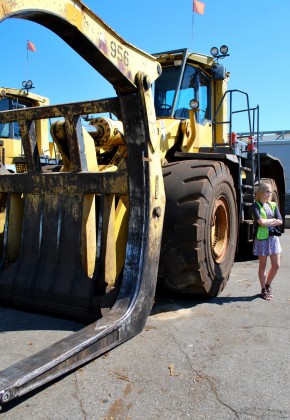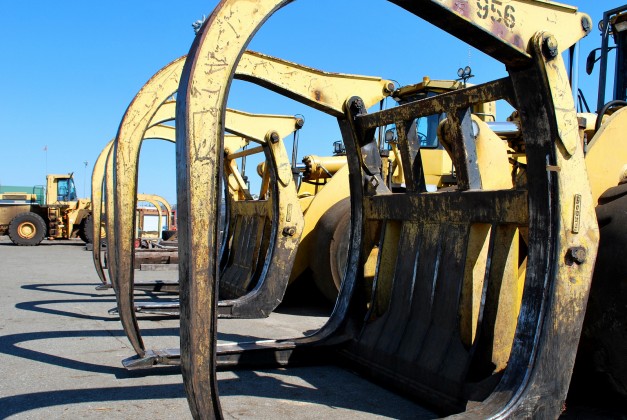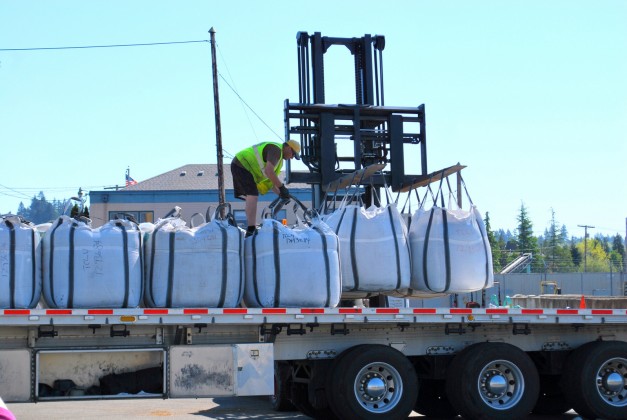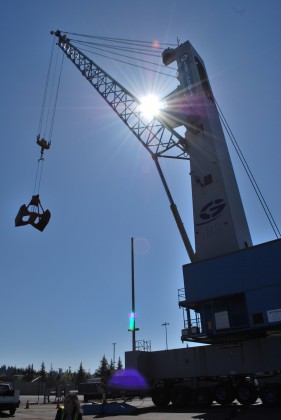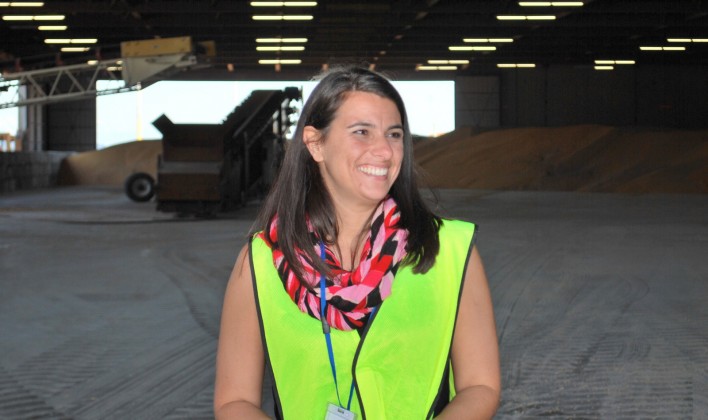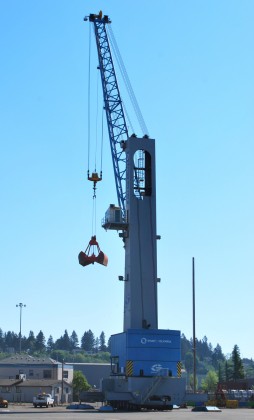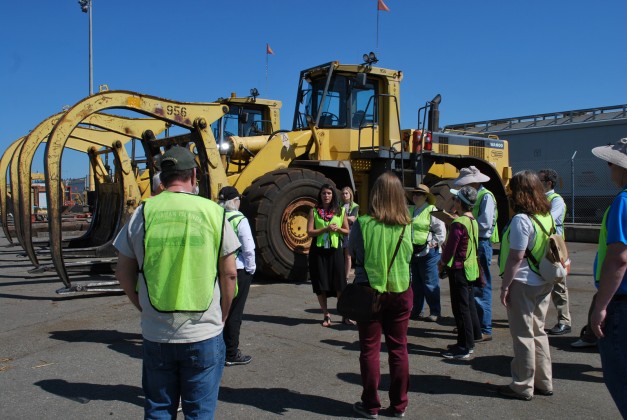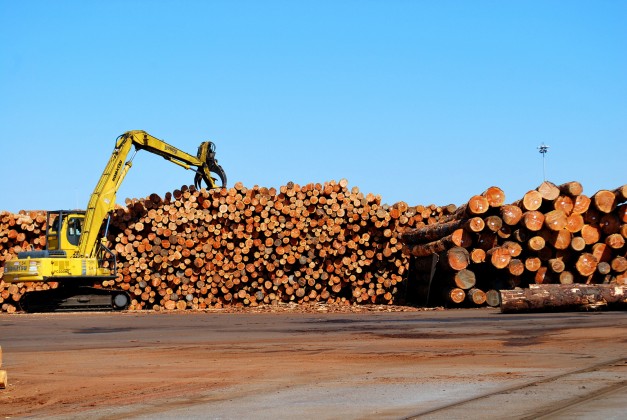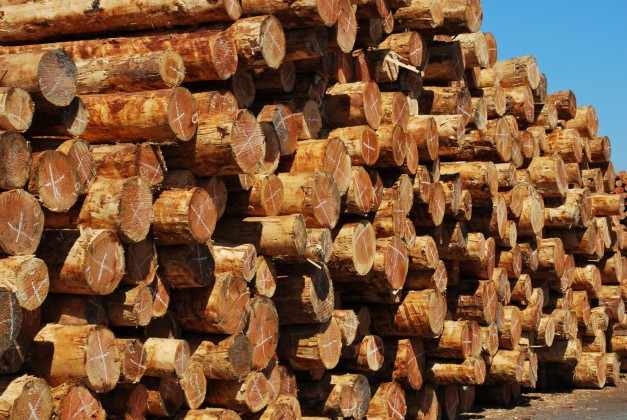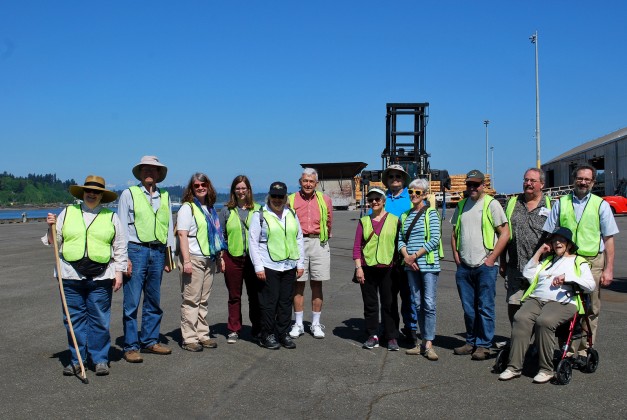The Port of Olympia is unique among working, industrial port facilities in that it’s located right in the heart of the city it serves. Filling much of the peninsula that separates Budd Inlet into East and West Bay, the port terminal area is 60 acres of working seaport.
Visitors to the waterfront attractions and businesses in Olympia are treated to views of the marine terminal’s mobile crane, warehouse and log stacks, all tucked behind secure fences and gates. Since 9/11 security increases, visitors have had to be satisfied with only peering through the chain-link fence or scheduling a private tour when port employees are available.
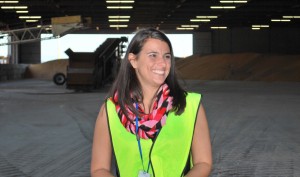
Not anymore.
The Port of Olympia is now offering monthly, in-depth, guided tours through October. Simply visit the Port of Olympia online and sign up for your chance to go behind the gates for a closer look.
I joined the inaugural tour on April 20 under sunny skies. Eighteen-year port employee Jennie Foglia-Jones is the Marketing and Community Relations Coordinator for the Port of Olympia. She coordinates, and leads, the two-hour tours starting at the port’s new offices at Percival Plaza (626 Columbia Street NW). Thirteen attendees gathered in the Olympics Room for an overview of the port’s history. Foglia-Jones also explained the scope of port operations including the four main operational components – the seaport, Swantown Marina and Boatworks, local real-estate land leases and the Olympia Regional Airport.
Next, we donned our fluorescent green safety vests and headed out the door. Foglia-Jones led the group along the Percival Landing boardwalk to the waterfront Port Plaza. This port-owned public space is a beloved gathering spot for locals and it was here the group paused for a brief safety talk.
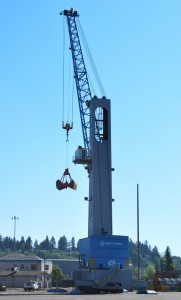
Then the real fun began.
We approached the security gate at the northern end of the plaza. You know…the one marked, “Secure Area: Authorized Personnel Only.” We walked right through. It was awesome.
Once on the other side, and once our giddy chatter subsided, we learned about the inner workings of the busy seaport. Foglia-Jones shared the logistics of vessels arriving, loading and unloading cargo, including the use of the Brusco Tug & Barge moored tugboats, the Ellis Brusco and Sharon Brusco, to bring ships into Budd Inlet and turn them for docking at one of the three cargo berths.
From our waterside vantage point we could see the day’s activity underway including:
- Trucks arriving empty and departing full from the warehouse.
- Port employees preparing the docks and machinery for an incoming ship.
- Trucks arriving and offloading cargo to the main holding area.
- Logging equipment moving, sorting and stacking logs.
It was a bustling scene and one we were eager to learn more about.
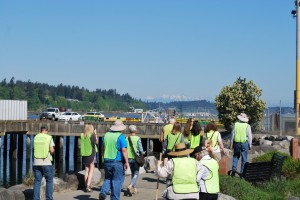
We moved across the vast cargo yards to the 76,000 square-foot, open beam warehouse, one of the largest on the west coast. It’s open beam construction means more storage space unimpeded by internal structure.
During our tour, the warehouse was sheltering one of the port’s newest cargos – bulk feed corn. Loaded in Turkey, the corn is non-GMO and certified organic, something that surprisingly is not available from U.S. growers. The port expects to continue receiving the feed corn shipments and either trucking them out to regional farmers or shipping it out on hopper rail cars as decided by their customer. The Port has been able to utilize their unique mobile crane, acquired in 2015 with the ability to use interchangeable buckets, as a good match for the cargo. With a variety of break-bulk cargo passing through the port, there’s no telling what might be in this space when you take your tour.
We continued through vast cargo yards and staging areas where a variety of equipment and cargo is stored and readied for use. Foglia-Jones explained some of the port’s equipment (and it’s truly massive up close!) and the workers trained to use it. While the port employs about 50 people, the group who handles ship-to-shore work are members of the International Longshore and Warehouse Union (ILWU) Local 47 based here in Olympia.
The information was fascinating, but honestly, we all wanted to see the log yard where the real action was. As we approached, the sheer size of the machinery and log stacks blew us away. Logs are sorted, graded, marked, barcoded, and stacked. Bark is stripped or not, depending on destination, and logs are staged in preparation for transport. We could have watched all day.
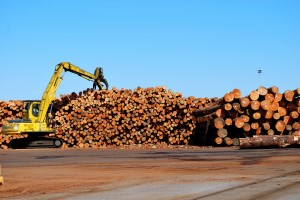
But, all good things come to an end and it was time to go. We turned in our vests and left with new information and a fresh perspective of the Port of Olympia and its place in the fabric of Thurston County’s economy and community.
Fun facts I learned on my tour:
- Most ships are turned around, facing out of the bay, while they are empty.
- Approximately 13,000 tons of organic corn in bulk were unloaded in the most recent shipment.
- The port warehouse is solar powered and regularly energy neutral.
- The mobile crane’s lifting capacity is 140 metric tons. The old crane’s capacity was only 40 metric tons.
- The port is a premier loading area for USDA approved livestock exports, shipping 1,426 head of dairy cattle to Vietnam in November 2015 and the anticipation of future shipments in late 2016.
See the tour schedule and sign-up online here. Tours are wheelchair, stroller and walker friendly. Kids of all ages are invited to come along.
Sponsored









































